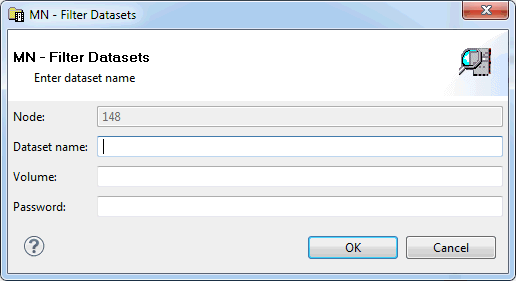This document covers the following topics:
When you display a list of objects, a default filter is often applied automatically. In many cases, this is the ID that you have used to log on. This causes that only those objects are shown where the names start with your user ID.
This section provides a brief overview on how to filter objects. For information on how to filter a specific type of object, see the appropriate section later in this documentation.
Before listing the objects contained in a specific folder, you might want to employ a filter in order to reduce the number of shown objects. Only the objects which satisfy the filter criteria will then be listed.
The filter criteria last entered are used the next time you expand the corresponding folder in the tree. These filter criteria are retained even after the session has ended and will be used the next time you start Mainframe Navigation.
When specifying filter criteria, you can use the following wildcard characters:
Asterisk
An asterisk (*) selects object names with any character
string. For example, when you specify "FSM*6", all
object names are selected which start with "FSM" and
end with "6" ("FSM006" or
"FSM016"). If "6" is
located at an unknown position within the name, you specify the name as
"FSM*6*" in order to also select names such as
"FSM600" or "FSM061".
Underscore
An underscore (_) selects object names with one character in
the place of each underscore. For example, when you specify
"FSM_6", object names such as
"FSM06" or "FSM16" are
selected.
Take care, when an object name contains dots as delimiters. It is not possible to use an underscore instead of a dot. For example, it is possible to specify "KO_._B*", but is not possible to specify "KO___B*". As a rule, underscores should only be used with for objects with names. It is not possible to use them for volumes which are offline.
 To define a filter
To define a filter
In the Mainframe Navigation view, select the appropriate object.
Invoke the context menu and choose .
Or:
Press F3.
A dialog box appears. The filter criteria that can be defined in this dialog box depend on the object which has been selected. The following example shows the dialog box which appears when have selected the folder which contains the z/OS datasets.

When a filter has already been defined for the selected object, the filter criteria are shown in this dialog box.
Enter the filter criteria. For example, in the above dialog box, enter a dataset name such as the following:
JWO.COMM.*
Choose the button.
The filter is immediately reflected in the Mainframe Navigation view.